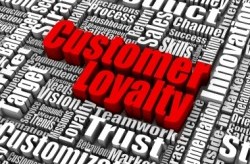
Customer acquisition often gets a lot of attention in the marketing world, but what happens after the sale is equally critical. Post-purchase engagement, the efforts a business makes to continue interacting with customers after they’ve made a purchase, is vital in turning one-time buyers into loyal, repeat customers. This stage in the customer journey is often underutilized, yet it holds immense potential to build long-term relationships and drive customer lifetime value.
In this post, we’ll explore why post-purchase engagement is essential for customer retention, strategies that businesses can adopt, and real-world examples of companies excelling in this area.
The Importance of Post-Purchase Engagement
The customer journey doesn’t end at the point of sale. In fact, the post-purchase experience is often what determines whether a customer will return or not. Providing value after the sale can increase customer satisfaction, promote brand loyalty, and lead to repeat purchases. Additionally, retaining an existing customer is significantly more cost-effective than acquiring a new one, making post-purchase engagement a key strategy for sustainable business growth.
1. Personalized Follow-Ups and Communication
One of the most effective ways to engage with customers after a purchase is through personalized follow-up communication. Rather than generic “Thank you for your purchase” messages, personalized emails that offer useful information, product recommendations, or exclusive discounts can keep the customer engaged.
Example 1: Apple’s Post-Purchase Communication
Apple excels at post-purchase engagement by sending personalized emails that guide customers through using their new products. After buying a new iPhone, for instance, customers receive emails with helpful tips on how to maximize their use of the device. These emails are tailored to the product and the customer’s needs, helping users feel supported and increasing the likelihood of future purchases.
Example 2: Asos and Product Recommendations
Fashion retailer Asos takes post-purchase engagement to the next level by sending personalized product recommendations based on customers’ purchase history. After a purchase, customers often receive emails featuring complementary products or similar items that align with their shopping preferences. This not only encourages repeat purchases but also enhances the overall shopping experience by showing that the brand understands their customers’ tastes.
2. Loyalty Programs and Exclusive Offers
Loyalty programs are a proven way to keep customers engaged after a purchase. Offering points for purchases, exclusive discounts, or special promotions can incentivize repeat business. Many businesses enhance their loyalty programs by incorporating personalized rewards that resonate with individual customer preferences.
Example 3: Sephora’s Beauty Insider Program
Sephora’s Beauty Insider Program is a masterclass in post-purchase engagement. Customers earn points for every purchase, which can be redeemed for exclusive products or experiences. Additionally, Sephora tailors promotions to each customer based on their purchasing habits, ensuring the rewards are relevant. This approach has helped Sephora create a highly engaged, loyal customer base that returns frequently.
Example 4: Starbucks Rewards Program
The Starbucks Rewards program is another excellent example of leveraging loyalty to drive post-purchase engagement. Customers earn points, known as “Stars,” for each purchase, which can be redeemed for free drinks or food. Starbucks further enhances this with personalized offers and double-star days, encouraging repeat visits. The program has been incredibly successful in turning casual customers into regulars.
3. Content Marketing to Enhance Post-Purchase Experience
Content marketing can play a significant role in keeping customers engaged after a sale. Offering valuable content such as tutorials, how-to guides, and educational resources helps customers get the most out of their purchase and keeps the brand top-of-mind.
Example 5: IKEA’s Assembly Guides and Home Ideas
IKEA is a prime example of a brand using content to engage customers after a purchase. Along with detailed assembly guides, IKEA offers online resources such as interior design ideas and tutorials on maximizing space with their products. This type of content not only supports customers in using the products they’ve purchased but also inspires future purchases as customers envision new ways to improve their homes.
Example 6: GoPro’s Community and User-Generated Content
GoPro excels at fostering post-purchase engagement through user-generated content. After purchasing a GoPro camera, customers are encouraged to share their videos and photos with the broader GoPro community. The brand often features these customer-made videos in marketing campaigns and social media, providing both recognition and a sense of belonging. This strategy keeps users engaged with the product long after the initial purchase and encourages repeat purchases as customers look to upgrade their gear.
4. Customer Service and Support
Excellent customer service can be a powerful tool in post-purchase engagement. Proactively reaching out to customers to ensure they’re satisfied with their purchase or offering easily accessible support channels can help turn a potentially negative experience into a positive one. This level of care shows customers that the brand values them, fostering long-term loyalty.
Example 7: Zappos’ Exceptional Customer Service
Zappos is renowned for its customer service, especially after a purchase. The company encourages customers to reach out with any concerns, offering a no-questions-asked return policy. Zappos’ dedication to customer satisfaction has turned one-time buyers into lifelong fans who appreciate the hassle-free shopping experience and excellent support.
Example 8: Amazon’s Post-Purchase Support
Amazon has set the standard for post-purchase customer support. Their easy-to-navigate return policies, prompt customer service, and ability to resolve issues quickly make the post-purchase experience seamless. Customers know that if anything goes wrong with their order, Amazon will take care of it, which builds trust and encourages repeat purchases.
5. Soliciting Feedback and Product Reviews
Actively seeking customer feedback after a purchase is a powerful way to engage with customers and improve your offerings. It shows that you value their opinion and are committed to providing a better experience. Additionally, positive reviews can serve as social proof, helping to attract new customers.
Example 9: Warby Parker’s Post-Purchase Surveys
Eyewear retailer Warby Parker is known for reaching out to customers post-purchase to ask for feedback on their shopping experience and product satisfaction. These surveys not only provide valuable insights into what customers love or dislike, but they also show that Warby Parker is invested in improving. The company frequently uses this feedback to refine its product lines and customer service offerings.
Example 10: Glossier and Customer Input
Beauty brand Glossier actively seeks feedback from customers after purchases. They send follow-up emails asking customers to review the products they’ve bought and share any suggestions for improvement. Glossier has built a loyal following by demonstrating that they listen to customer input, regularly launching new products based on customer feedback and suggestions.
In today’s competitive market, businesses can’t afford to lose contact with customers after a sale. Engaging customers post-purchase through personalized follow-ups, loyalty programs, content marketing, superior customer service, and feedback loops is essential to turning one-time buyers into loyal, repeat customers. By nurturing these relationships, companies can significantly increase customer lifetime value and build lasting loyalty.
Chintan is the Founder and Editor of Loyalty & Customers.





